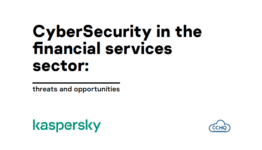Hedge Funds and AI
Hedge Funds and AI: A Quick Look, by Jean Lehmann, CEO Cyber Capital HQ, and Hans-Jörg von Mettenheim, CEO of Keynum

February 21, 2020
Hedge Funds and AI: A Quick Look
This post is the first in a series about the impact of artificial intelligence in various industries. Here, Jean Lehmann, CEO of Cyber Capital HQ, and Hans-Jörg von Mettenheim, CEO of Keynum, write about how AI is impacting hedge funds.
Artificial Intelligence (AI) is often used synonymously with machine learning and, indeed, these two technologies are very close cousins. If you listen to the buzz around AI, you might imagine a powerful algorithm able to forecast the future and make billions in trading profits for its lucky inventors. However, contrary to expectations, the main applications for AI in quantitative trading do not focus on alpha generation, which represents an active return on investment.
The following trade cycle illustrates this:

Let’s start at the top of our trading cycle:
- Strategy development. Here we want to answer fundamental questions that can determine our overall trading strategy. We might be interested in which asset class will be trending over the next few months or whether cryptocurrencies are going to perform well. Unfortunately, this kind of event is inherently unforeseeable and, due to the lack of data, AI is not going to help us much with this specific point.
- Tactical Allocation. These are short-term trading decisions. Shall we buy or sell an asset now? In a few minutes? Hours? Days? Here, some AI approaches, especially from the artificial neural network domain, prove quite promising. So-called Convolutional Neural Networks have shown especially promising results in recent years. Typical applications involve using as much historical price data as we have available. We then attempt to identify trading situations in which, for example, the price is likely to rise over the next time steps, possibly within some defined measure of risk.
- Pricing. AI starts to shine with these models. A feature of AI is to find structure in large datasets of noisy and partially missing data. Pricing of options is a particularly fertile field for AI methods. Indeed, options data is available in all kinds of flavors and the amount of exotic options is tremendous.
- Execution. This field is another application where AI can considerably contribute to the bottom line of quantitative traders. AI can help in getting a good idea where mid-prices, bid, and asks might be moving within the next few milliseconds or seconds. Such capabilities can make all the difference when optimizing the execution of large orders. AI methods can be especially helpful in slicing and dicing an order over a more extended period to avoid market impact.
- Risk management can be a useful application of AI, but other (less complicated) methods are also promising in this area. Typical applications for AI can be found in computing more realistic value-at-risk measures.
The Low Down on AI
AI employs a data-driven, scientific approach. If one can find a structure, the right AI method can help to find it. Nevertheless, AI should not be blindly applied. The adage “garbage-in, garbage-out” still holds.
Such effects amplify for AI models, which can produce stellar results in-sample but sometimes fail to show robust numbers on future unseen data. We refer to samples as historical data.
Most AI methods overfit easily when not applied carefully. Overfitting happens when a model learns the detail and noise in the training data and negatively impacts the performance of the model on new data. With overfitting, noise, or random fluctuations in the training data is accounted for and learned as concepts by the model. The problem comes from the fact that these concepts would not apply to new data, and thus negatively impact the performance of the model regarding its ability to generalize.
From an operational standpoint, a trader must pay attention to the quality of the data that nurtures an AI model. The convergence coming from the increase in computation power together with the accessibility to large and meaningful datapoints and datasets could lead to AI models with increasing predictive power. Combined with automation and fast execution, investors could potentially use such models for both strategic and tactical allocation, as well as sound risk management.
How does a firm begin to use AI for trading? An increasing number of hedge funds are employing data scientists. Often, it is difficult to find professionals with adequate knowledge of quantitative methods combined with trading experience. Nevertheless, this situation has been changing rapidly. Universities, businesses, and engineering schools are reacting to the demand and offering combined master programs that pair state-of-the-art AI with in-depth and applied knowledge of trading.
Conclusion
Over the cycle of a trade, AI can provide useful recommendations. The main strength of AI is less about alpha generation and more about execution and pricing. Investigating AI methods over the trading cycle should prove a worthwhile endeavor for most firms with connections to trading. Especially when lots of data is available and just lying around, there is always hanging fruits to reap. The perceived hurdle may seem high. However, once started, an AI project in trading can move forward smoothly.
About the Authors:
Jean Lehmann is the Founder and CEO at Cyber Capital HQ and a recognized thought leader in innovative and disruptive technologies. Jean has particular expertise in Digital Transformation, Artificial Intelligence, Cybersecurity and Cryptography, Blockchain, and 20 years of experience in leading complex and multi-disciplinary engagements for leading companies. Jean is a regular contributor, panelist, and moderator at renowned international Cybersecurity conferences. He is an advisory board member in the Blockchain and Venture Capital sectors, a guest lecturer at INSEEC Business School on Hedge Funds and Banking Management, a trusted advisor to Arie Capital Banking Group, the first specialized online digital corporate banking group. Jean holds an INSEAD/Wharton MBA, a DEA from HEC School of Management and an MSc from Eurecom/EPFL. He is fluent in English, French, German and Portuguese.
Hans-Jörg von Mettenheim is Founder and CEO of Keynum Investments. The story of Keynum Investments began in 2010 at the Forecasting Financial Markets international conference on quantitative finance. Hans-Jörg von Mettenheim and Sylvain Barthélémy shared the belief that mathematical and statistical methods do generate long-term sustainable returns. They started to develop quantitative trading strategies and a fully automated trading advisory system in 2013. Hans-Jörg and Sylvain founded Keynum Investment in 2017. The company now provides quantitative trading strategies for banking institutions, funds, funds of funds, family offices and high net worth individuals.
Related Articles

AI and Cybersecurity
How are Cyber threats rising in complexity and sophistication with the advent […]
Read MoreDecember 18, 2023

Cyber Threat Intelligence in Financial Services
On October 13th, Kaspersky, the global leader in Cybersecurity, and Cyber Capital […]
Read MoreDecember 5, 2022

Cybersecurity in the Financial Services sector
Cybersecurity in the financial services sector: Threats and Opportunities The financial services […]
Read MoreSeptember 13, 2022
Subscribe
Your personal information is kept in accordance with our Privacy Notice

